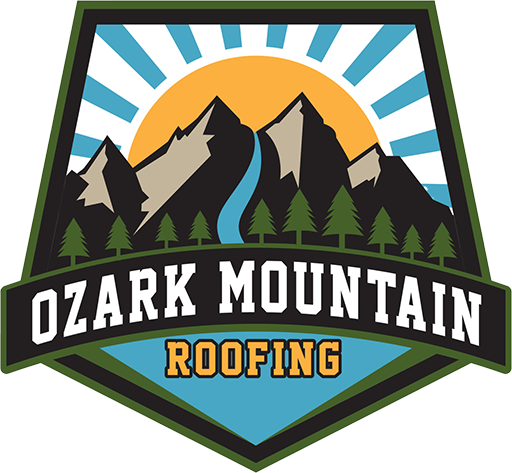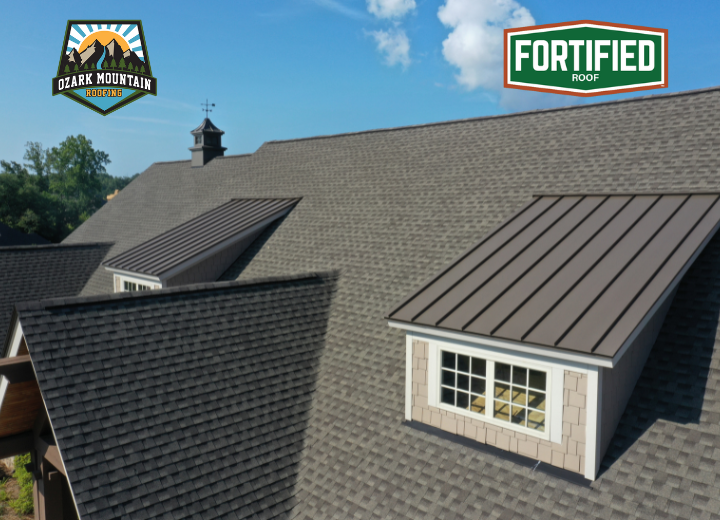Arkansas weather doesn’t mess around—hail, high winds, and tornadic thunderstorms show up with little warning. That’s exactly why Ozark Mountain Roofing installs IBHS FORTIFIED™ Roof systems: a proven standard that helps your home resist storm damage better than code-minimum roofs. But here’s the under-reported win: FORTIFIED roofs make life easier for both homeowners and insurance adjusters. Fewer surprises. Fewer headaches. Faster resolution when storms do hit.
Below, we break down why FORTIFIED is a practical win for everyone involved in a claim—and how Ozark Mountain Roofing keeps that process simple.
First, what does “FORTIFIED” actually mean?
FORTIFIED™ is a voluntary, above-code construction standard from the Insurance Institute for Business & Home Safety (IBHS). For roofing, it focuses on the places roofs typically fail in severe weather:
- Sealed roof deck to keep water out even if shingles blow off
- Stronger edge details at eaves and rakes
- Ring-shank nails and tighter nailing patterns to hold panels better in high winds
- Upgraded flashing and vents to reduce wind-driven rain entry
- Independent third-party verification and a 5-year designation certificate
Translation: instead of just replacing shingles, you’re hardening the entire roof system against the way storms actually cause damage.
Why homeowners benefit most
1) Less storm damage = fewer claims to file
A FORTIFIED roof is designed to limit the leaks and interior damage that often trigger a claim. When roof edges and the deck are sealed and secured, your home is better protected, even if the surface shingles take a beating. Fewer claims filed means less disruption, less paperwork, and less time spent chasing approvals after every severe cell rolls through.
2) Faster fixes when you do need help
If a claim is necessary, the FORTIFIED documentation (photos, evaluator reports, and your IBHS designation) gives adjusters exactly what they need to confirm the roof’s status, identify the affected components, and move forward. That clarity shortens the back-and-forth, reducing days of uncertainty to a simpler, more direct decision.
3) Lower lifetime hassle
The real cost of a roof isn’t just the invoice—it’s the stress, interior repairs, and schedule chaos storms can cause. By reducing the chance of water intrusion, a FORTIFIED roof helps you avoid follow-on expenses like drywall, flooring, and electrical repairs. That’s long-term peace of mind, not just a new look.
4) Potential insurance incentives
Many carriers recognize FORTIFIED and may offer mitigation credits or discounts when a verified designation is in place. These vary by company and policy, but your documentation puts you in the best position to ask your agent about savings.
Why insurance adjusters benefit, too
1) Clear scope, less friction
FORTIFIED projects are verified by a third-party evaluator, so adjusters receive consistent documentation: pre-install photos, in-progress checkpoints, and post-install verification. That reduces gray areas and debate about how the roof was built, which in turn speeds up decisions.
2) Better loss outcomes after big events
When a neighborhood with FORTIFIED roofs is hit, adjusters can expect more repairable damage and fewer total losses, especially from wind-driven rain. That streamlines catastrophe response and helps carriers serve policyholders faster.
3) Reduced cycle times
Every adjuster wants to close accurate files quickly. A FORTIFIED roof narrows the variables—fewer hidden deck leaks, fewer failing edges—and that can translate to clearer estimates and shorter claim cycles.
“So… who benefits more?”
In a perfect world, both do. But if we’re being practical, homeowners feel the biggest day-to-day benefit because the roof is less likely to fail in the first place. That means fewer frantic calls after a storm, fewer claims, and a home that stays livable while the weather does its worst.
Adjusters absolutely benefit—cleaner documentation, better data, fewer escalations—but the homeowner gets the life upgrade: less damage, less downtime, and less time spent “bugging the insurance” after every wind event.
Why choose Ozark Mountain Roofing for FORTIFIED in Arkansas?
- Specialized training & process. Our team is trained on the FORTIFIED Roof standard and the exact photo/documentation sequence your evaluator needs.
- Evaluator coordination built in. We coordinate with a Certified FORTIFIED Evaluator so your project earns the official IBHS designation—your golden ticket for insurer conversations.
- Arkansas storm know-how. From ridge vents to drip edges, we specify materials and details that match real Ozarks weather patterns, not just a textbook.
- Grant and incentive guidance. If grants or mitigation incentives are open, we’ll help you determine eligibility and gather the right paperwork.
- Warranty and workmanship. Beyond FORTIFIED, we stand behind our installs with clear warranties and post-storm support.
FAQs
Will a FORTIFIED roof stop all damage?
No roof is invincible, but FORTIFIED dramatically reduces the most common failure points—especially water intrusion after shingle loss.
Do I have to replace my whole roof to get FORTIFIED?
A FORTIFIED Roof designation is awarded at the time of roof replacement. We’ll assess your home and provide a scope that meets the standard.
How long does the designation last?
The IBHS FORTIFIED Roof designation is valid for 5 years and can be renewed with an inspection.
Can my insurance premium go down?
Many carriers recognize FORTIFIED; discounts vary by company. Your designation certificate and photo package help your agent apply the right credits, if available.
Your next step
- Schedule a FORTIFIED Roof assessment with Ozark Mountain Roofing.
- We’ll map a FORTIFIED-ready scope, coordinate the evaluator, and outline any available incentives.
- You get a verified, storm-smart roof—and a simpler path with your insurer when the weather turns.
Ready to make storm season less stressful? Contact Ozark Mountain Roofing for your FORTIFIED Roof assessment. Let’s build a roof that protects your home—and your time.


